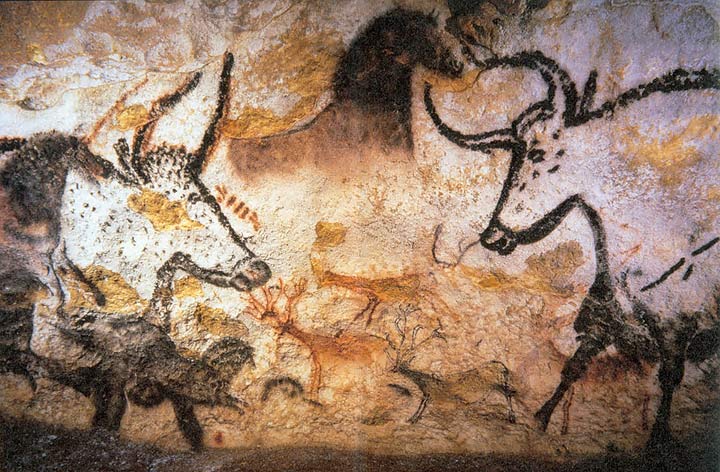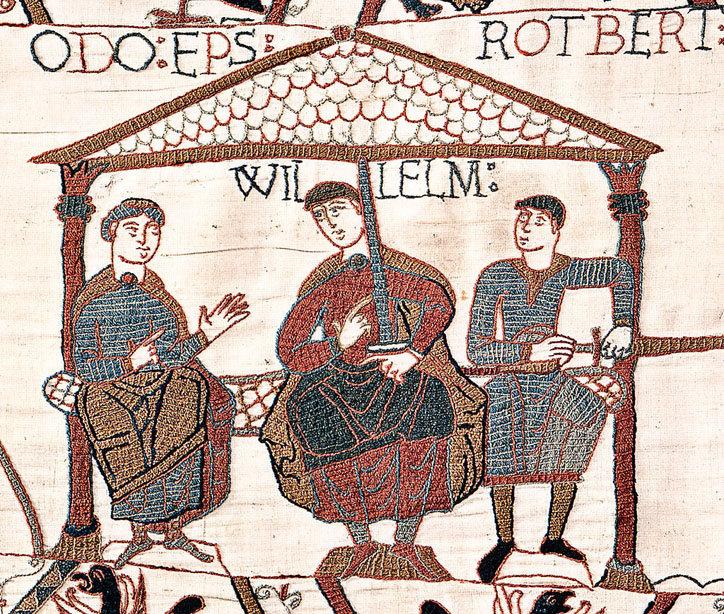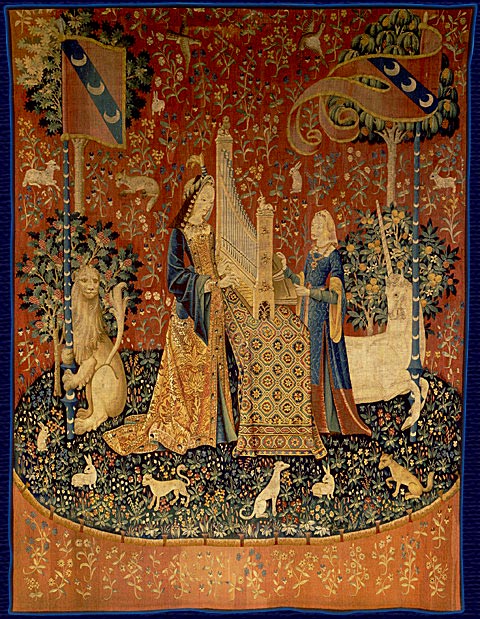Appendix 1: French adapted text for picture walk of selected illustrations from
The Secret Cave: Discovering Lascaux
, written and illustrated by Emily Arnold McCully:
1.Un jour, Marcel Ravidat et son chien, Robot, découvrent un grand trou. Peut-être ça mène à un trésor secret ?
2.Marcel invite ses trois amis d'explorer le grand trou près d'un arbre tombé.
3.L'un par l'autre, les quatre garçons descendent le trou.
4.Ils continuent d'explorer le long d'un tunnel mystérieux. Ils cherchent le trésor.
5.Au but du tunnel, il y a un passage étroit.
6.Ils trouvent une grotte secrète. Sur les murs, il y a des animaux : une vache rouge et un renne ; les chevaux et les taureaux. Qui sont les artistes ? Quand et comment font-ils ces peintures ?
7.Le prochain jour, les amis continuent leur exploration de la grotte.
8.Ils descendent avec une corde. Les murs peints sont allumés par une lanterne.
9.Sur les murs, il y a un homme oiseau blessé et un bison et beaucoup d'autres animaux.
10.Ce n'est plus un secret ! Les autres enfants voudraient explorer la grotte.
11.Les quatre amis parlent de la découverte avec leur professeur.
12.Tout le monde du village admire les peintures anciennes dans la grotte. Quelle merveille ! Il y a des taureaux blancs et noirs, les rennes, les chevaux, les bisons, et les vaches.
13.Les quatre héros deviennent gardiens du trésor de la grotte secrète de Lascaux : Marcel Ravidat, Jacques Marsal, Georges Agnel, et Simon Coencas. (Et n'oubliez pas le chien, Robot.)
Appendix 2: French adapted text to accompany selected website illustrations of the Bayeux Tapestry (sequencing activity accessed July 2, 2014 from: http://www.bayeuxtapestry.org.uk/activities/bayeuxtap-sequence.pdf)
1.Voici le roi et un soldat.
2.Il est sur un cheval.
3.Les soldats vont en bateau.
4.Voici une bataille.
5.Il y a quatre bateaux et quatre chevaux.
6.Le roi parle aux soldats.
Appendix 3: These examples show the progression of student responses from simple words and phrases to complete sentences to describe the cave paintings and tapestries.

Figure 1. Using the Lascaux cave paintings for descriptions:
Qu'est-ce que vous voyez ? (What do you see?)
un taureau
deux taureaux blancs
les rennes marron
Voilà un cheval noir.
Il y a deux grands taureaux blancs.
Sur les murs de la grotte, il y a des animaux.
(Image accessed July 14, 2014 from:
http://upload.wikimedia.org/wikipedia/commons/1/1e/Lascaux_painting.jpg)

Figure 2. Using the Bayeux Tapestry for descriptions:
Qu'est-ce que vous voyez? (What do you see?)
trois hommes
deux épées
sur une chaise
Ils s'appellent Odo, Guillaume, et Robert
Voici le roi – Guillaume de Normandie.
Il porte une tunique rouge. .
Odo porte une tunique grise. Robert aussi.
Il y a trois hommes sur une chaise.
(Image accessed on July 14, 2014 from:
http://upload.wikimedia.org/wikipedia/commons/9/95/Bayeuxtapestryodowilliamrobert.jpg)

Figure 3. Using the Lady and the Unicorn tapestries for descriptive observation:
Qu'est-ce que vous voyez? (What do you see?)
rougebleu
une dameune jeune fille
un lionune licorne
des animauxdeux drapeaux
des fleursdes arbres
la musiquela dame joue
La robe est bleue et rouge.
Elles sont blondes.
(Image accessed on July 14, 2014 from:
http://upload.wikimedia.org/wikipedia/commons/2/20/The_Lady_and_the_unicorn_Hearing.jpg)
Appendix 4: Implementing District Standards (World Language and Visual Arts)
This curriculum unit responds to the five goal areas of the national world-readiness standards for learning languages – the five "C"s: Communication, Cultures, Connections, Comparisons, and Communities.
62
It is specifically focused on the national and state Communications standards for students to communicate effectively in more than one language in all three communication modes. This unit aligns with the first, second, and third content standards of the Communication Objectives from the Connecticut World Language Curriculum Framework.
63
The unit primarily responds to Visual Arts Content Standard 4 from the Connecticut Arts Curriculum Framework: students will understand the visual arts in relation to history and cultures. However, it also aligns to Visual Arts Content Standard 1: students will understand, select, and apply media, techniques and processes.
64
Students will imitate the artwork of this unit, creating cave paintings, tapestry designs, and comic strip panels.